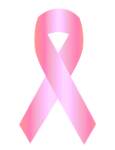Adding digital breast tomosynthesis to 2D mammography screening results in a 40% reduction in patient recall rates compared to routine screening mammography alone, a new study shows.
The study, conducted at Yale University School of Medicine in New Haven, CT, of 7,578 screening mammograms, found that the recall rate was 6.6% for digital breast tomosynthesis plus 2D screening mammography. It was 11.1% for 2D screening mammography alone, said Melissa Durand, MD, one of the authors of the study.
Similar recall rates were seen in both groups for masses, but the recall rate was significantly lower with digital breast tomosynthesis and 2D mammography compared to 2D mammography alone for asymmetries and calcifications, said Dr. Durand. The recall rate was 2.8% for asymmetries when both techniques were used compared to 7.1% for routine screening mammography, she said. “Tomosynthesis, which is 3D mammography, allows us to look at the breast in 1 mm slices. In routine mammography, breast tissue is compressed and overlying tissue can look like a suspicious finding. Tomosynthesis resolves this by looking slice by slice,” said Liane Philpotts, MD, a study author.
The radiation dose for the combined examination is below the Food and Drug Administration limit for mammography and below the dose of film mammography, noted Dr. Durand.
source: American Roentgen Ray Society
